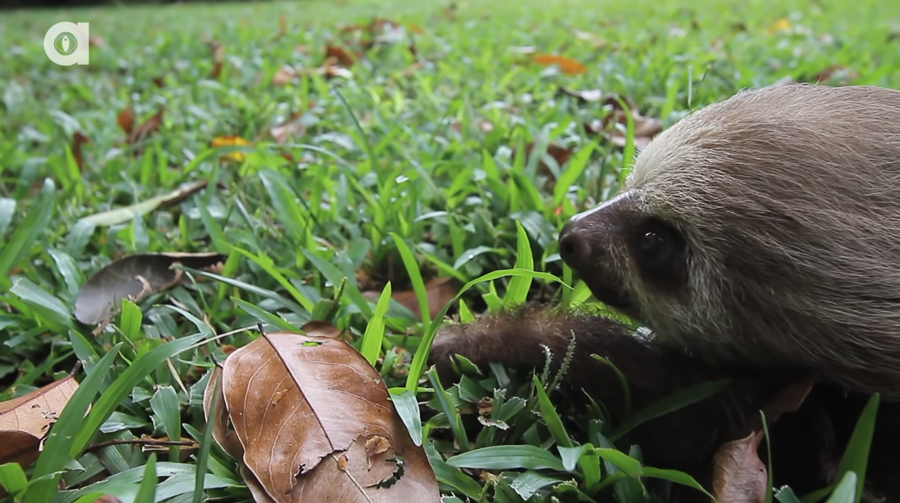Look in the grass: A pair of eyes watches intently, and something like a smile takes shape on its mouth. The sloth is approaching… slowly. It takes its time crawling across the ground, reaching each arm out, its long claws revealed.
This is what you might see if a sloth ever chases you.
This slow-moving footage was filmed at the Sloth Sanctuary of Costa Rica, an organization dedicated to the rescue, rehabilitation, and research of these creatures, as well as the conservation of their rainforest habitat.
“Of the two families of sloths found in Costa Rica, Bradypus variegatus (Three-fingered sloth) is the more familiar to most people. Hair is gray/brown with a darker face, white forehead and raccoon-like band around the eyes…
“Spending long hours in often relatively open canopy, the slow moving sloth would seem to be easy prey for large raptors or snakes. To combat this somewhat the Three-fingered sloth has evolved a specialized neck structure. Unlike other mammals with 7 cervical vertebrae, Three-fingered sloths have 9 which allows them to rotate their heads up to 300 degrees. This feature allows them to scan for predators without wasting precious moments and energy adjusting body position.”
“The more active of Costa Rica’s two sloth species, Choloepus hoffmanni is also the largest… Unlike the Bradypus, it has no visible tail. Hair color ranges from champagne to buff to dark brown with a light brown to blond face with small brown eye rings…
“Most of its life is spent hanging upside down to eat, sleep or move about, so the Choloepus has developed short abdominal hair with the side hair flowing towards the mid-back for rain to drain off when they are upside down… Choloepus prefers to spend its non-foraging time in vine-draped vegetation clusters high in the canopy, making them more difficult to observe in the wild—and more elusive to researchers. During the ‘green’ or rainy season, algae can grow in the hair, making it appear green, adding camouflage against predators.”
Watch another short from the sanctuary: What do baby sloths sound like?
Plus: The Pygmy Sloths of Isla Escudo de Veraguas and Why are sloths so slow?
Curated, kid-friendly, independently-published. Support this mission by becoming a sustaining member today.




